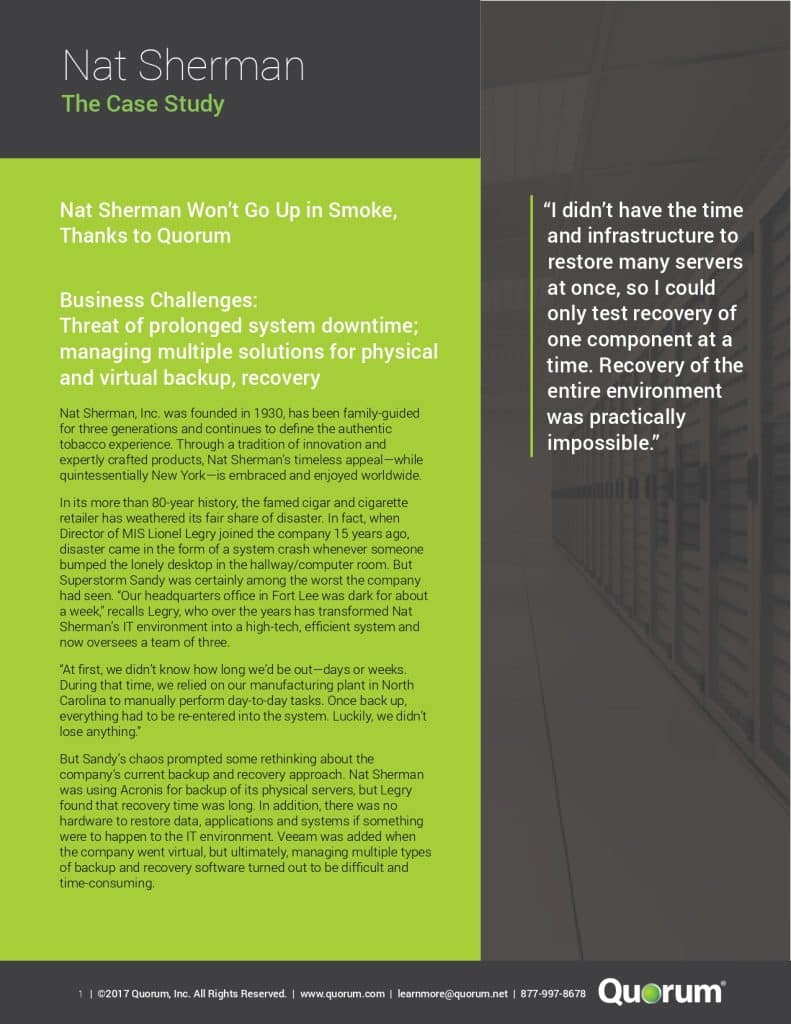
Business Challenges: Threat of prolonged system downtime; managing multiple solutions for physical and virtual backup, recovery
Nat Sherman, Inc. was founded in 1930, has been family-guided for three generations and continues to define the authentic tobacco experience. Through a tradition of innovation and expertly crafted products, Nat Sherman’s timeless appeal—while quintessentially New York—is embraced and enjoyed worldwide.
In its more than 80-year history, the famed cigar and cigarette retailer has weathered its fair share of disaster. In fact, when Director of MIS Lionel Legry joined the company 15 years ago, disaster came in the form of a system crash whenever someone bumped the lonely desktop in the hallway/computer room. But Superstorm Sandy was certainly among the worst the company had seen. “Our headquarters office in Fort Lee was dark for about a week,” recalls Legry, who over the years has transformed Nat Sherman’s IT environment into a high-tech, efficient system and now oversees a team of three.
“At first, we didn’t know how long we’d be out—days or weeks. During that time, we relied on our manufacturing plant in North Carolina to manually perform day-to-day tasks. Once back up, everything had to be re-entered into the system. Luckily, we didn’t lose anything.”
But Sandy’s chaos prompted some rethinking about the company’s current backup and recovery approach. Nat Sherman was using Acronis for backup of its physical servers, but Legry found that recovery time was long. In addition, there was no hardware to restore data, applications and systems if something were to happen to the IT environment. Veeam was added when the company went virtual, but ultimately, managing multiple types of backup and recovery software turned out to be difficult and time-consuming.
“I didn’t have the time and infrastructure to restore many servers at once, so I could only test recovery of one component at a time. Recovery of the entire environment was practically impossible.”
“We had a few issues with our backup and recovery approach, including frequent crashes and issues copying open files to the USB drive we used to store data offsite,” said Legry. “And the recovery procedure was complicated: We had to read through detailed instructions in order to restore data. Who can concentrate on such detail in a stressful downtime situation?” Legry found testing to be cumbersome as well. “I didn’t have the time and infrastructure to restore many servers at once,” he said, “so I could only test recovery of one component at a time.
Recovery of the entire environment was practically impossible.”

